In this review, I will talk about all Diamondback mountain bikes available at the moment and help you choose the right model for your needs.
Diamondback mountain bikes are renowned for their performance, reliability, and accessible pricing. The company started out making BMX bikes, but today they’re famous for their mountain bikes and high-performance e-bikes.
They have a range of bikes for different budgets and uses, including mountain, gravel, and urban models, suitable for both serious and casual riders alike.
This Diamondback mountain bike review will outline the current off-road models, provide a history of the brand, and give details on assembly and where you can purchase.
Contents
Diamondback Mountain Bikes Lineup
There are three categories of Diamondback mountain bikes: hardtail, full suspension, and kids’. As of writing, there are eight different model lines you can choose from.
Below, you can read an in-depth description of each model line and click on the link to see more information on the official website or purchase the bike you’re interested in.
Hardtail Diamondback Mountain Bikes
First up is the brand’s selection of hardtail mountain bikes, which consists of four families: the Hatch, Hook, Line, and Overdrive.
1. Diamondback Overdrive
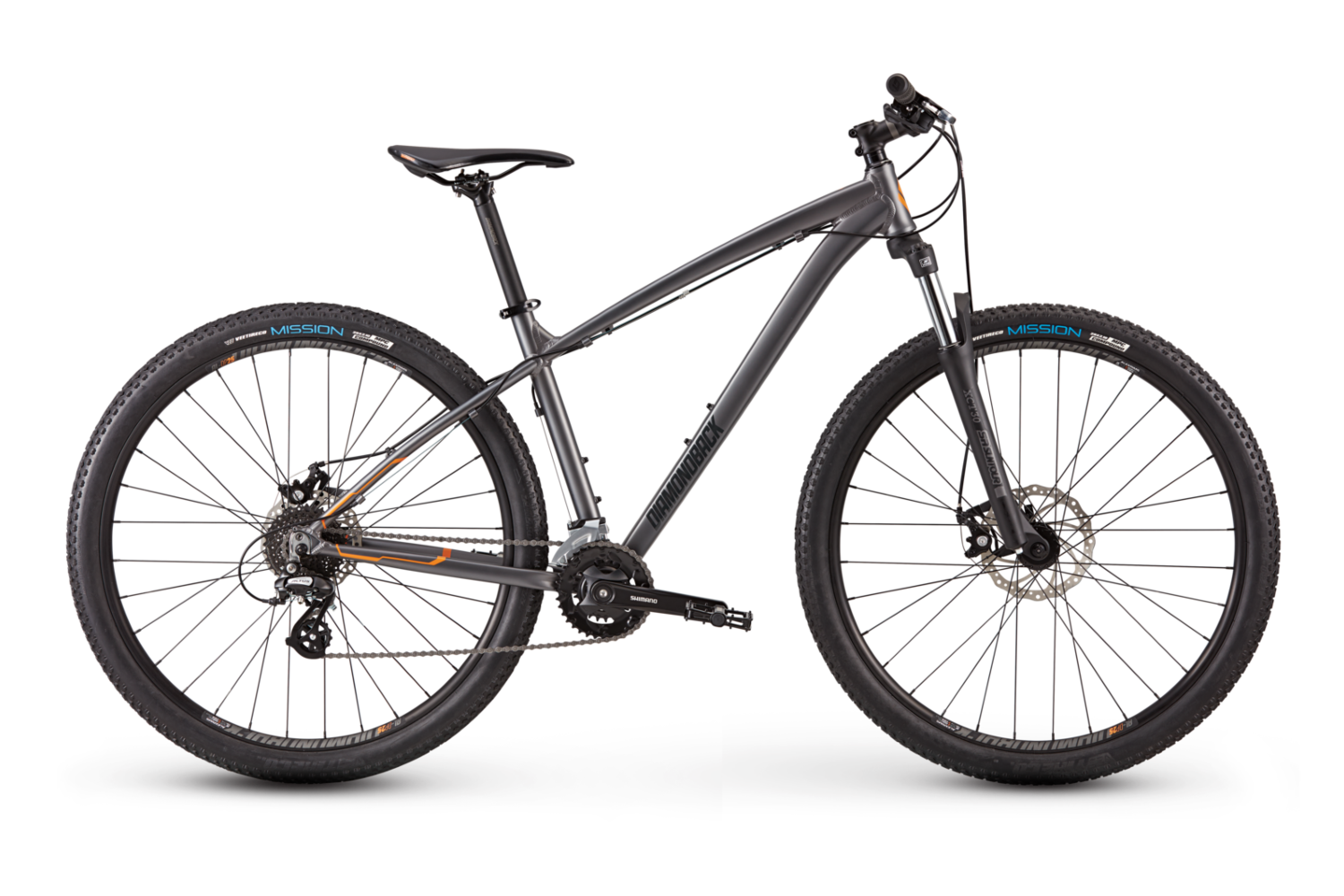
MSRP: $750 – $1,000
The Overdrive is a cheap 29er hardtail available in two builds, the Overdrive 1 and Overdrive 2. These bikes are suitable for beginners or casual weekend riders who want a bike with light trail abilities.
The Diamondback Overdrive series is intended both for those who are just starting out with cycling and want to commute or stay active and for recreational riders who need a training bike they can take out on dirt trails, gravel roads, and fire paths.
The Overdrive is available in two builds, both of which are aluminum with 100 mm travel suspension forks. However, the components differ significantly on these bikes.
The cheaper model (Overdrive 1) has an 8-speed Shimano Altus drivetrain, Tektro mechanical disc brakes, and an inferior Suntour XCM30 fork. The more expensive model has a higher-end Shimano Alivio 9-speed drivetrain and MT200 hydraulic brakes. A RockShox Judy TK will also offer improved performance on the trails and stand up to more abuse.
The Diamondback Overdrive is best for casual riders who want a reliable companion for mixed terrain. These 29er bikes are fast and roll over small rocks and roots without any issues.
Buy an Overdrive Diamondback mountain bike if you want to make your first steps in mountain biking, you won’t regret it.
2. Diamondback Hook
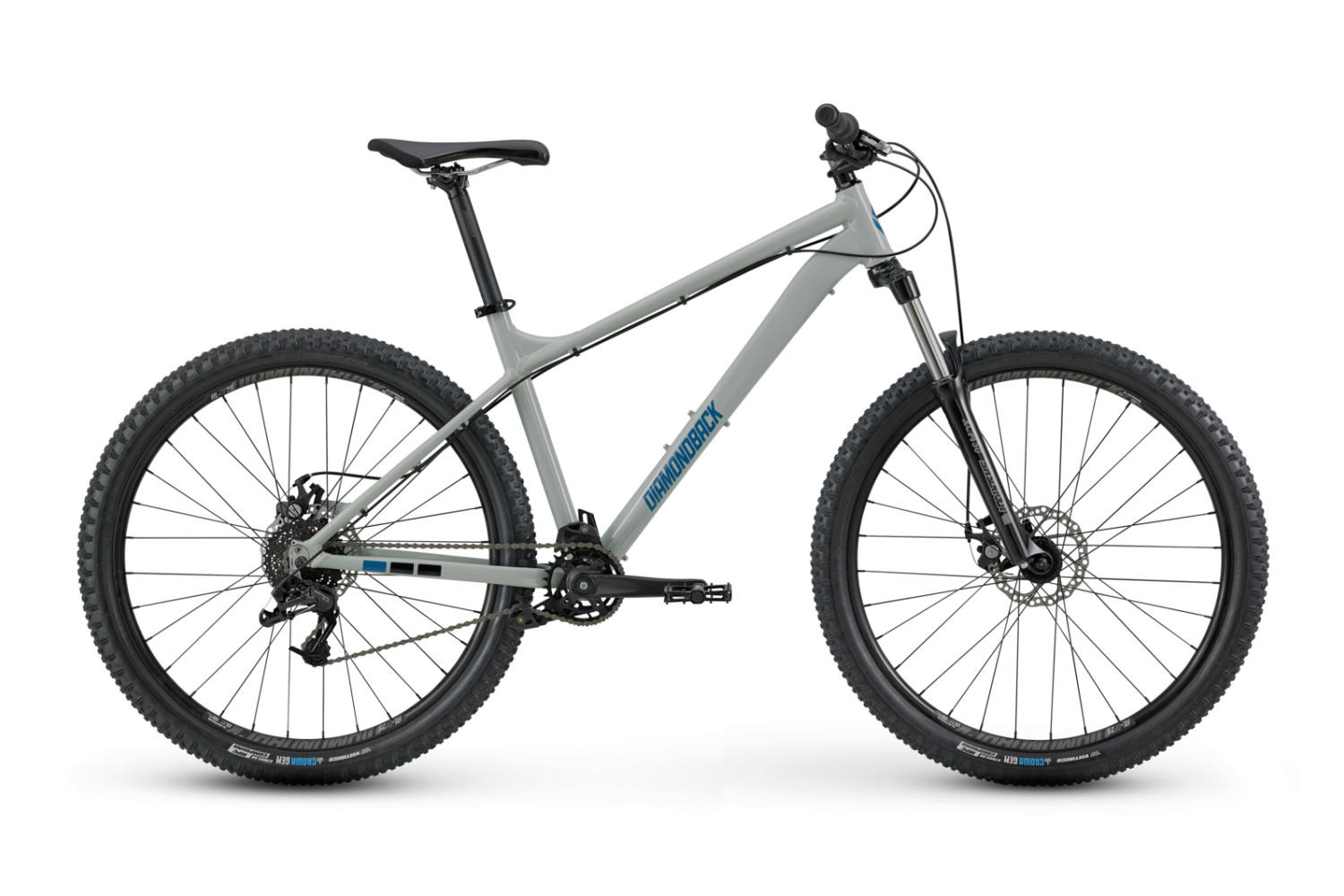
MSRP: $815
The Diamondback Hook is currently available in one build. This hardtail sits in the middle of the range in terms of price and is suitable for beginners.
The Hook is a 27.5″ model with a longer-travel 120mm suspension fork. Given that, it’s capable of tackling more aggressive trails than the Overdrive.
The slightly wider 2.35″ tires, SR Suntour XCM30 fork, and an aluminum frame that blends stability and maneuverability will allow you to quickly advance your mountain biking technique.
The Hook has SRAM X4 components, an 8-speed drivetrain, Tektro mechanical disc brakes, Vee Rubber Crown Gem tires, and internal routing for a dropper post.
This model was created for riders who like riding more tight and technical trails thanks to its smaller wheels and short rear end.
If you enjoy being outside, training, and riding on loose or muddy terrain, the Diamondback Hook is just the type of bicycle you need.
3. Diamondback Line
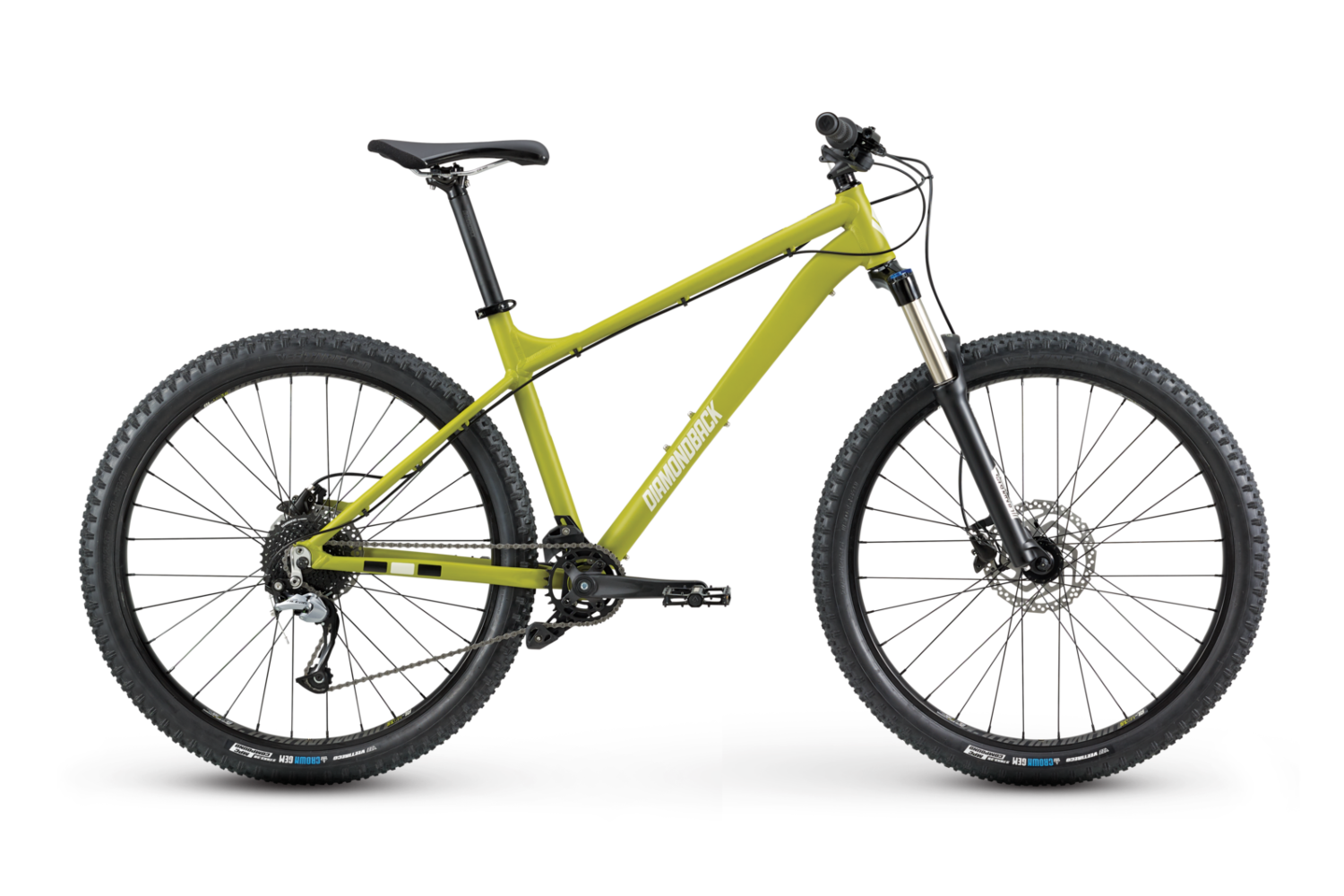
MSRP: $900
The Diamondback Line takes a step up on the Hook, with improved components that add durability and performance to the same bomb-proof frame.
If you’re a beginner rider who enjoys light trails or someone looking for an affordable yet capable bicycle, the Diamondback Line might be right for you.
This bike has the same lightweight aluminum frame as the Hook, designed with a low-slung geometry, a long front end, and a short rear to balance stability and agility.
Again, this is a 27.5″ bike, which lowers the standover height and makes it suitable for shorter riders. At this low price, you get a 9-speed Shimano Acera drivetrain, Shimano MT200 hydraulic disc brakes, and a Suntour XCR32 120mm fork.
If you’re a more aggressive trail rider who wants the performance of hydraulic disc brakes and extra gearing for more extreme gradients, choose the Line instead of the Hook.
See on REI.com See on Diamondback.com
The Hatch is the most versatile of the Diamondback mountain bikes, and is currently available in one build, the Hatch 3. This bike has mounts for a rack and fenders and performs well as a light trail bike or city commuter.
The Hatch 3 is also the only Diamondback hardtail with progressive wheel sizing. This means the smaller frame sizes get 27.5″ wheels, and the larger ones run 29ers, making for a consistent ride quality for all heights.
The Hatch has a cheap 100mm Suntour XCM-DS 100mm fork, which is mostly suitable for light off-roading. The basic 3×7-speed drivetrain provides plenty of range for carrying extra cargo and spinning on descents but adds complexity and reduces durability when riding off-road.
Thankfully, Diamondback squeezed in Shimano hydraulic disc brakes for reliable and powerful stopping.
The Diamondback Hatch is intended for riders who need a versatile bike for comfortable mixed-terrain commuting and leisurely weekend rides. Look elsewhere if you want to hit proper mountain bike trails.
Diamondback Full Suspension Mountain Bikes
As of early 2024, Diamondback has two full suspension model lines, the Yowie and Release, each available in several different builds across a wide price range.
1. Diamondback Yowie
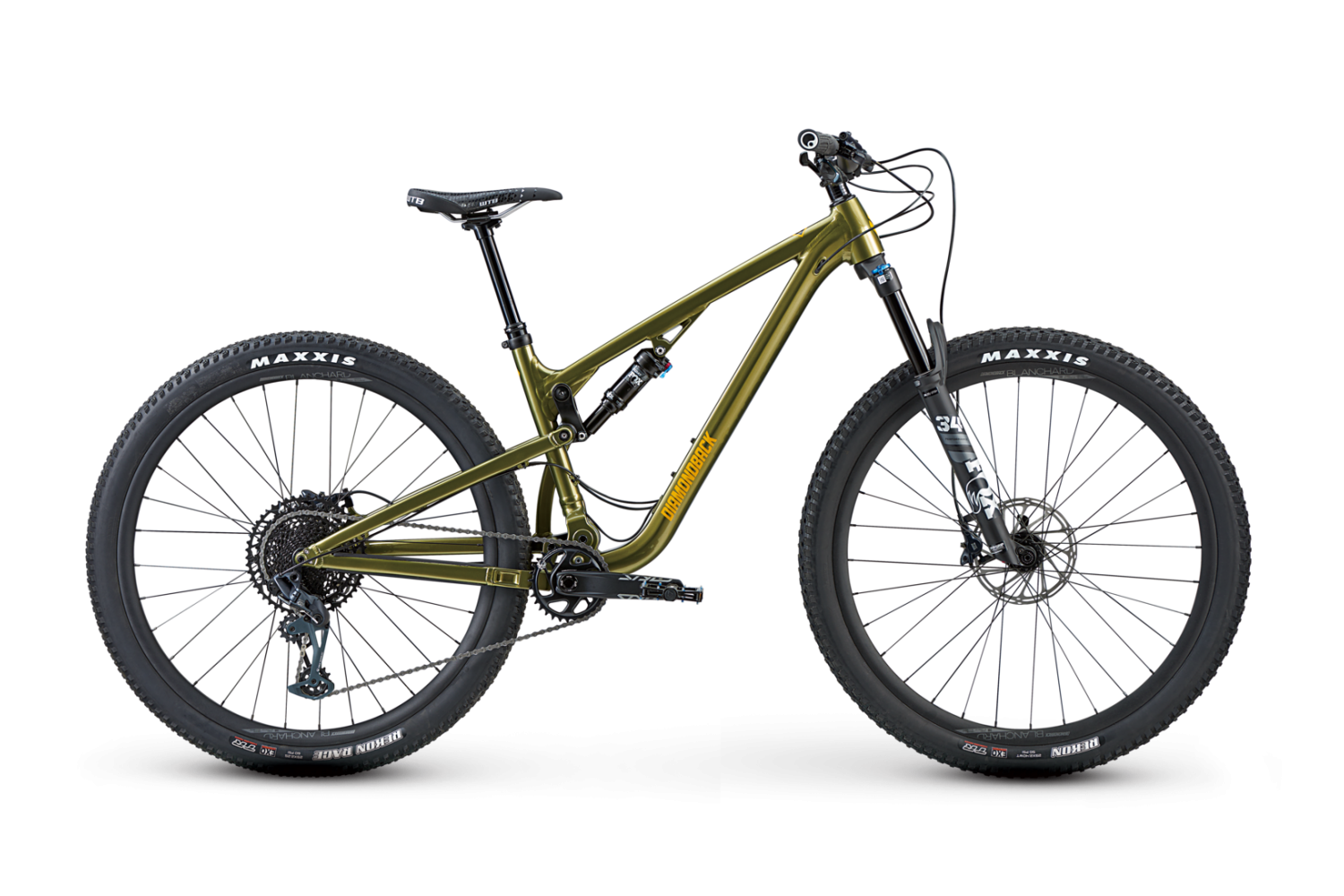
MSRP: $3,100 – $5,550
Diamondback’s Yowie series offers four 29er full-suspension XC models. Of the four, there are two carbon builds intended for competitive riders or those who want to reach their limits on the trails. The other two are aluminum for the budget-conscious rider.
The two premium carbon builds in this series look similar at first glance. Both models have 130mm front and 110mm rear suspension on Diamondback’s Level Link platform and Maxxis Rekon 29″ x 2.4″ and 2.25″ tubeless-ready tires. But the 5C has better Fox Float Performance suspension, an improved 12-speed SRAM GX Eagle drivetrain, stronger Guide T brakes, and Novatec hubs, making it much more capable.
The aluminum frame builds have very similar build kits to the carbon Yowies, but the cheaper Yowie 1 has a low-end TranzX dropper, a SRAM SX/NX mixed drivetrain, and cheaper RockShox suspension front and rear.
So, if you’re an intermediate rider who wants to set fresh new goals on your local cross-country tracks (or win some races), you should consider the Diamondback Yowie.
See on REI.com See on Diamondback.com
2. Diamondback Release
MSRP: $2,850 – $5,850
Diamondback’s Release line consists of five trail mountain bikes, making it the largest family from the brand. These full-suspension models include the Release 1, 2, and 3 aluminum, and 4C and 5C carbon builds.
The Diamondback Release series spans entry to mid-range beginner and intermediate bikes all the way to high-end race-ready machines. The aluminum builds have 29er wheels, while the 4C and 5C have carbon frames and 27.5″ wheels.
The three aluminum models have forks with 34mm stanchions and 140mm of travel but differ in quality and manufacturers. The 4C and 5C get 36mm stanchions and 150mm of travel. The Release 5C impresses with a Fox 36 Factory Float fork.
Drivetrains differ greatly in quality, too, but all are 12-speed from SRAM. Release 1 and 2 have SRAM SX or SX/NX, while the higher-end models have NX and GX Eagle components. All of these drivetrains, except for the SX Eagle, are solid and will do a great job on the trails.
The good news is that four of five models have hydraulic disc brakes from SRAM, ranging from the basic Level to Guide G2 RS. The Release 3 has Shimano XT brakes.
So, the Diamondback Release line is aimed at riders who are serious about mountain biking. Consider one of these models if you’re riding frequently and enthusiastically or even racing as an amateur.
Kids’ Diamondback Mountain Bikes
Diamondback has a solid range of kids’ MTBs, three smaller 24″ versions of the Hook, Line, and Sync’R adults’ hardtails. The other is a fat tire 20″ rigid mountain bike, the El Oso Nino.
1. Diamondback El Oso Nino
MSRP: $650
The Diamondback El Oso Nino is a fun fat bike that is incredibly capable and inspires confidence in young riders.
This kids’ fat bike is versatile and capable on most terrain, including snow, mud, and sand. The El Oso Nino is only available with 20″ wheels, which suits kids from 44″ to 55″ tall or four to nine years old.
The name, ‘El Oso,’ means ‘the bear’ in Spanish, which is an ample description of the bike. It has a bomb-proof steel frame that’ll withstand abuse from your child, massive 4″ tires that absorb shocks and maintain traction on varied terrain, and a 7-speed Shimano Tourney drivetrain for pedaling on varied terrain.
The El Oso Nino also has mechanical disc brakes for safe stopping and child-specific components for improved comfort and control.
Consider the Diamondback El Oso Nino 20″ for your child if they’re ready to hit the trails in all conditions.
See on REI.com See on Diamondback.com
2. Diamondback Hook, Line, and Sync’R 24″ Kids’ Bikes
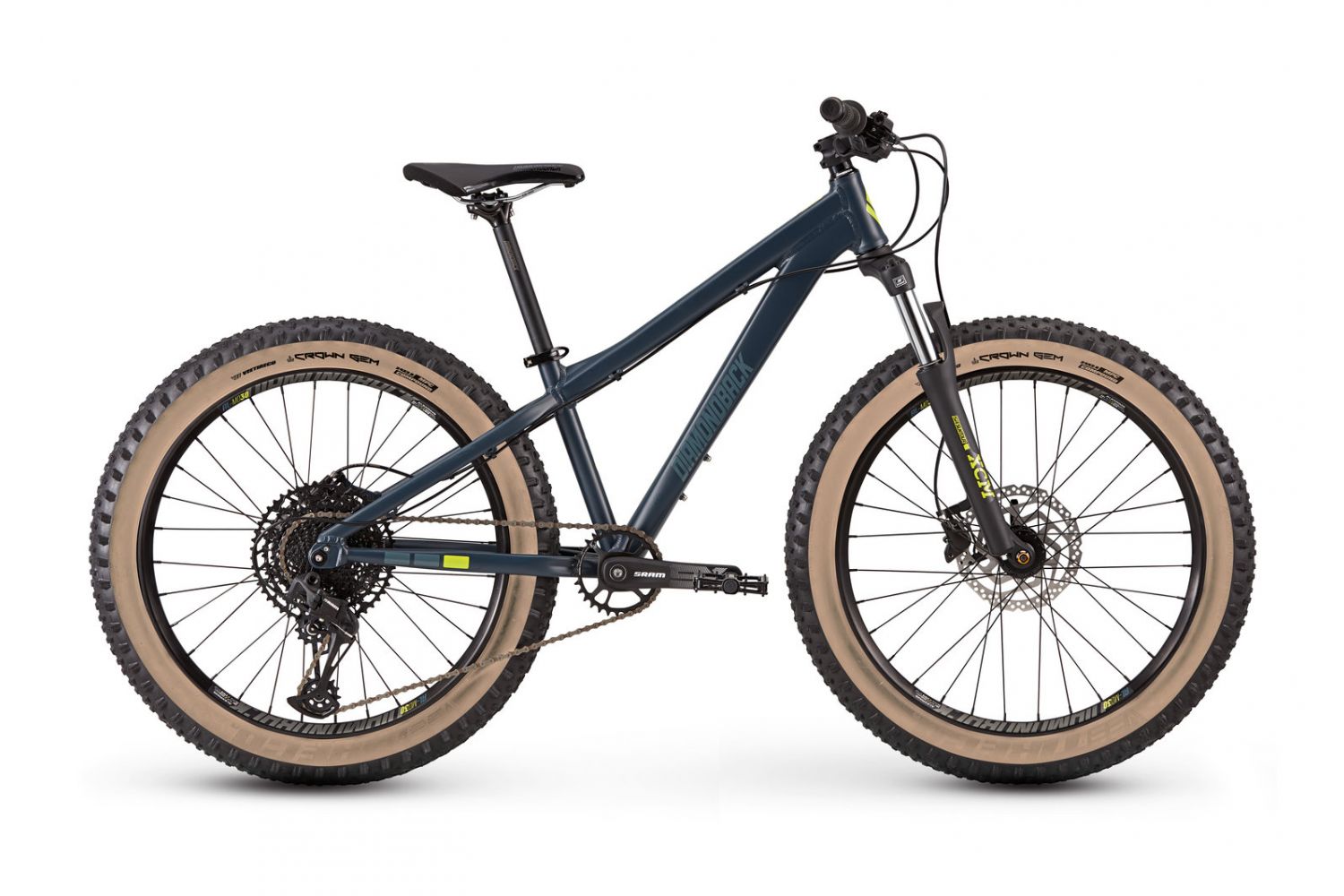
The Diamondback Hook, Line, and Sync’R 24″ hardtails are aimed at kids 53″ to 62″ tall and roughly eight to twelve years old. They cover three price points, offering different capabilities to riders with different skill levels and trail ambitions.
These Diamondback kids’ mountain bikes cost $550, $800, and $1,050.
Although each is built upon the same frame, the specs differ significantly between the three 24″ models.
The entry-level Hook 24 has a cheap Zoom 50mm suspension fork, a basic Shimano Tourney 7-speed drivetrain, off-brand mechanical disc brakes, and cheap Wanda MTB tires. This model is only suitable for light dirt and gravel paths or paved riding.
In contrast, the Line has an 8-speed SRAM X4 drivetrain, SR Suntour XCT JR 24″ 80mm fork, Tektro Aries mechanical discs, and CST tires. The Line 24 can handle bumpier off-road surfaces than the Hook but is still best kept to mild terrain.
Finally, the Sync’R 24 is the premium kids’ Diamondback mountain bike, sporting Shimano hydraulic disc brakes and a SRAM SX 12-speed drivetrain. Additionally, it has an adjustable SR Suntour XCM Boost 80mm fork, wider 2.6″ Vee Tire Crown Gem tires, and tubeless-compatible rims (not tires). Choose the Sync’R if you have a kid with serious trail ambitions.
Diamondback Bikes History
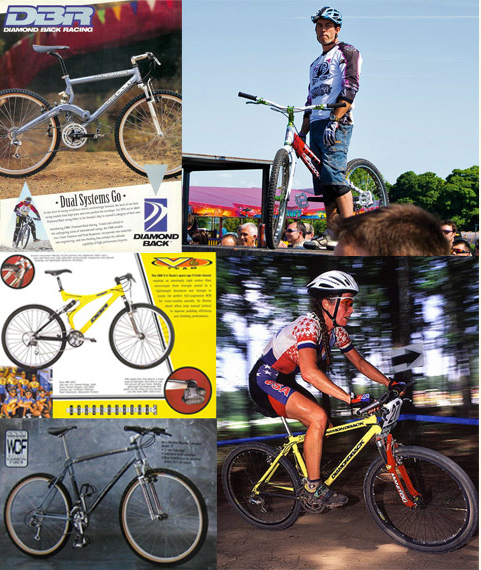
Diamondback was founded in 1977 in Washington, USA, as a BMX brand. Initially known as Diamond Back, they focused on BMXs and sponsored riders, which helped them quickly gain popularity.
Later, in 1982, Diamondback launched a bike known as the Ridge Runner. This was their first MTB model and one of the world’s first production mountain bikes.
In 1988, they launched Team Diamond Back Racing (DBR). Under the team name, riders won several awards, ranging from the US men’s National XC championships to a bronze medal at the Atlanta Olympics Women’s XC.
Ever since, Diamondback has been working on improving the performance of their mountain bikes. They hold a patent for the Level Link platform (a high-end feature on full-suspension mountain bikes) and are constantly developing better bikes.
Diamondback Bikes Assembly
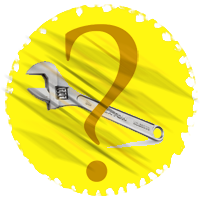 Of course, assembly instructions are important to any Diamondback mountain bike review. Most of the bikes come partially assembled, so transportation costs less. There are two ways to proceed. You should either:
Of course, assembly instructions are important to any Diamondback mountain bike review. Most of the bikes come partially assembled, so transportation costs less. There are two ways to proceed. You should either:
- Bring your bike to a Local Bike shop
- Assemble the bike yourself
If you have some experience with bike mechanics, it’s best to do it yourself.
There are plenty of videos and tutorials online on how to assemble and fix a bike. By learning and doing it, you’ll master your skills. Here’s one good tutorial:
Where to Buy Diamondback Bikes?
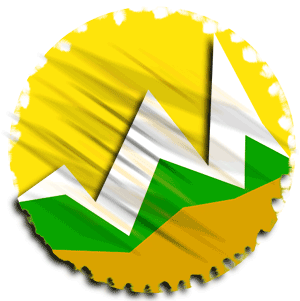 The beauty of Diamondback mountain bikes, besides the craftsmanship, is the competitive pricing. One of the reasons is that Diamondback focuses mostly on online sales to offer its bikes at a competitive price.
The beauty of Diamondback mountain bikes, besides the craftsmanship, is the competitive pricing. One of the reasons is that Diamondback focuses mostly on online sales to offer its bikes at a competitive price.
The best options you have if you want to get one of the Diamondback models here:
- Diamondback.com
- REI.com – Limited selection
Bottom Line
I hope you now have a good understanding of Diamondback mountain bikes. They are some of the best bikes you can buy online. Like always, just do your homework and pick the correct size. I have tried to give you the best overview of every bike so you can make the right choice.
All the bikes are reliable and will last many years if you maintain them properly. Happy riding!

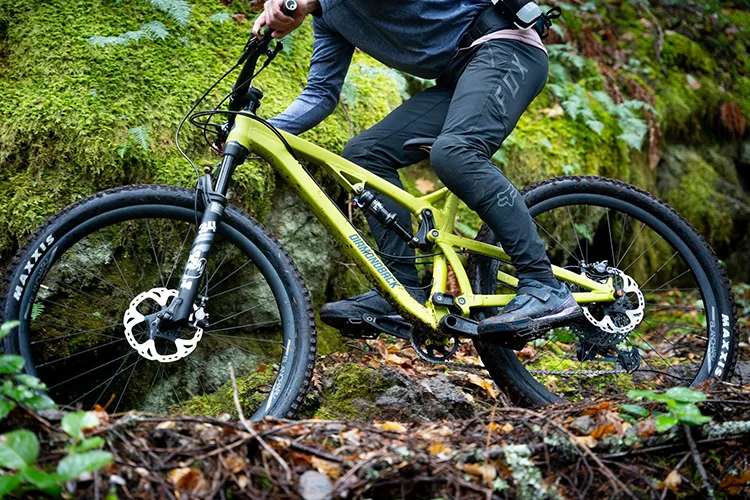
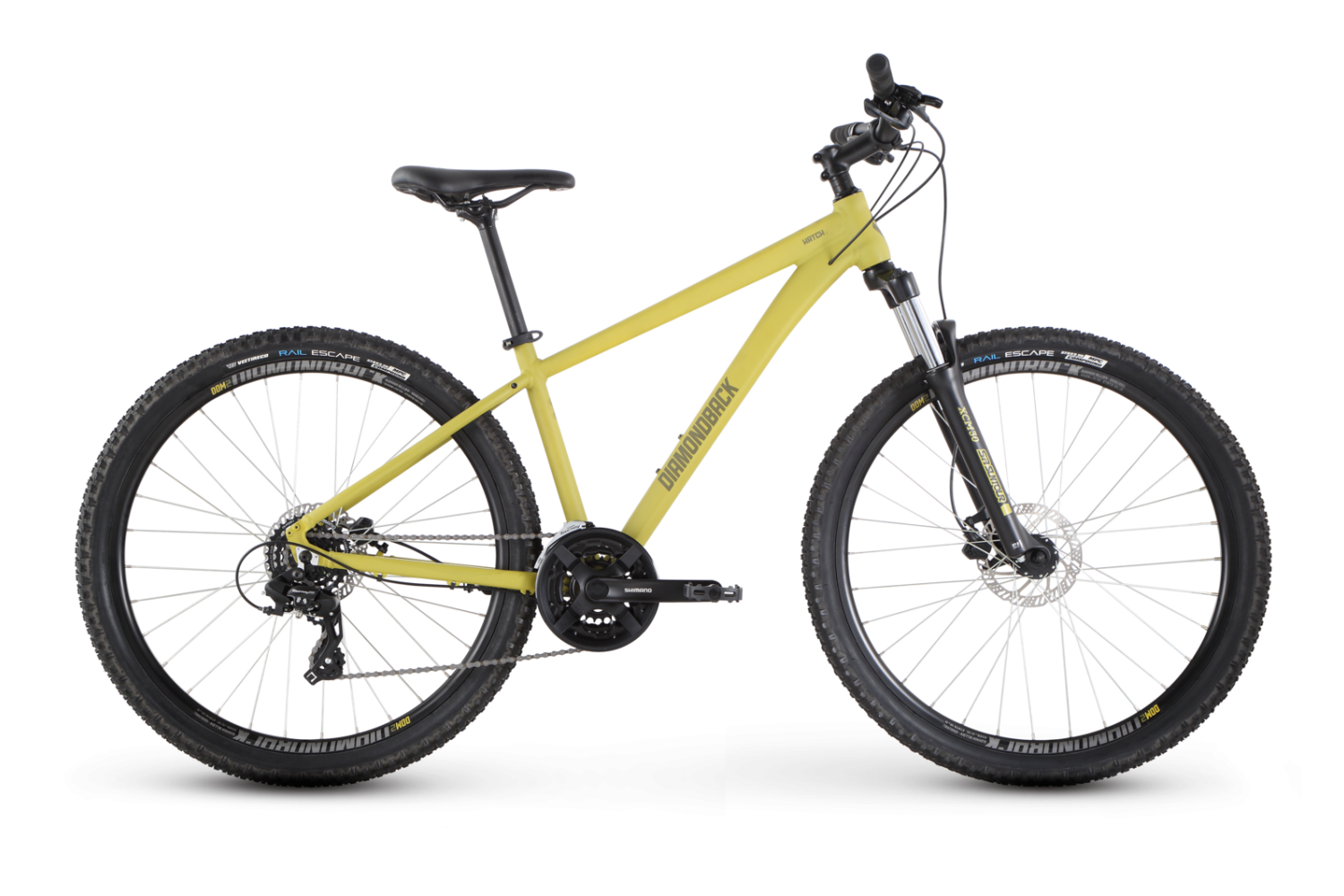


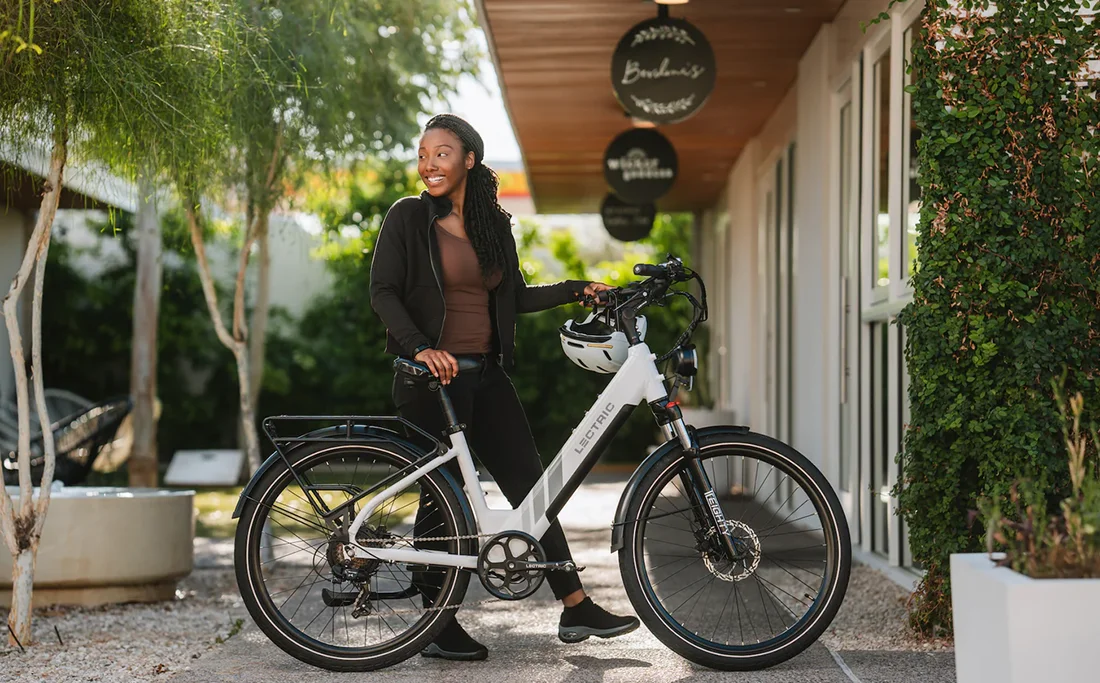
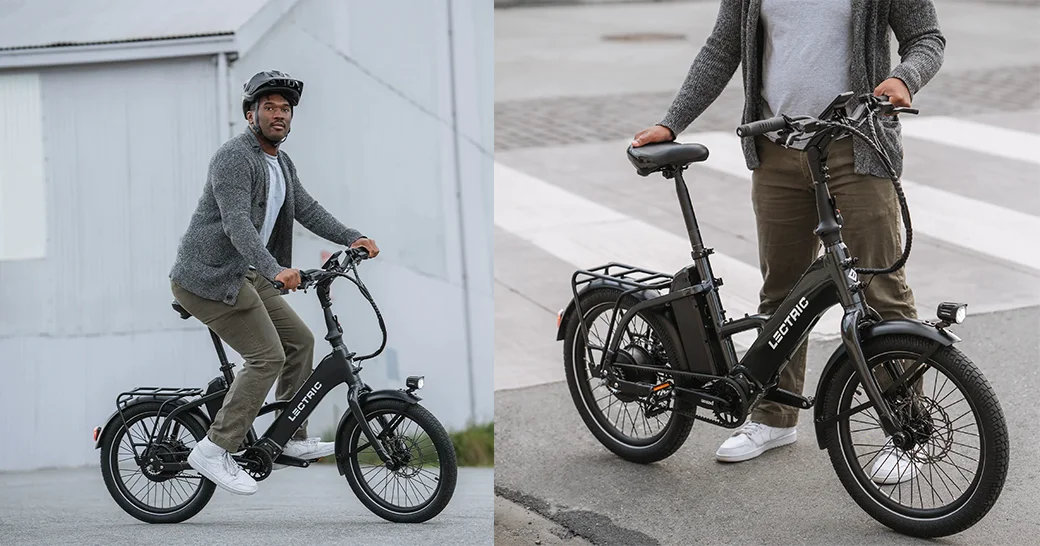
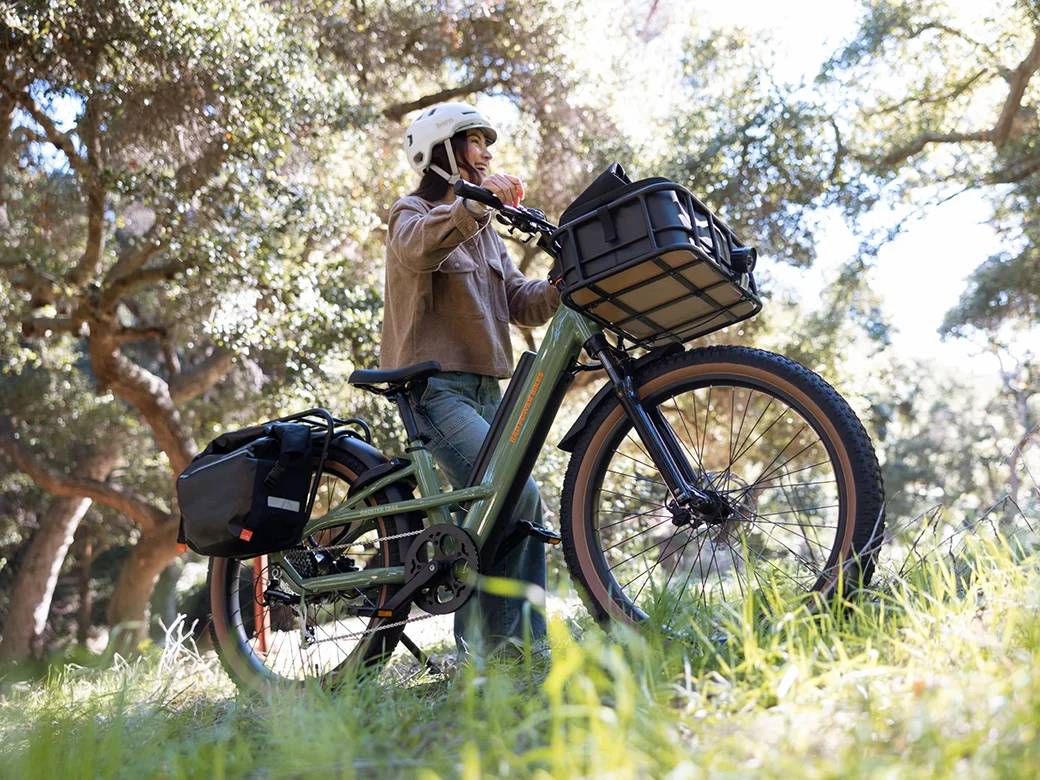
I purchased the Release 5C Carbon last year. Overall a great bike with very poor customer service. Had the frame protection start to peel about a month aster purchase. Customer Service stated they did not have replacement parts and sent over a clear plastic frame protection to replace a black rubber factory installed frame protection. This was not an acceptable replacement, but the only option they offered after going back and forth. Now the finish is flaking off of the carbon frame to which they again are doing everything they can to not warranty the claim. They DO NOT stand behind their products! STAY CLEAR OF DIAMONDBACK….
Hi Vegas,
I am sorry to hear that!
I’m wondering if you could answer a question or direct me to one. My wife and I are wanting to start biking. We have our eyes on the Overdrive 29 1 and the Lux 1. My biggest concern is that we will also take these bikes on the road a lot also. Do you know if they have a lockout on the suspension, or is this an after factory addition I could make? Is that even what I’m looking for? I’m new and uneducated.
Thank you
Good to hear that you’re interested in cycling! ? Yes, the Overdrive 29 1 and the Lux 1 both have lockout functions, so you’ll be able to ride them on the road as well.
Clutch and Release models are the same frame. With different stems and a few little tidbits… If you have short legs and a long torso, get a release, if you’re the other way around, get Clutch… Just know,they are the same bike with a different name
You’re right, James. The frame geometry between the two is very similar. However, the release series offers a lot more choice when it comes to price points and components, so it’s not that easy to make a choice based just on the build of your body. 🙂